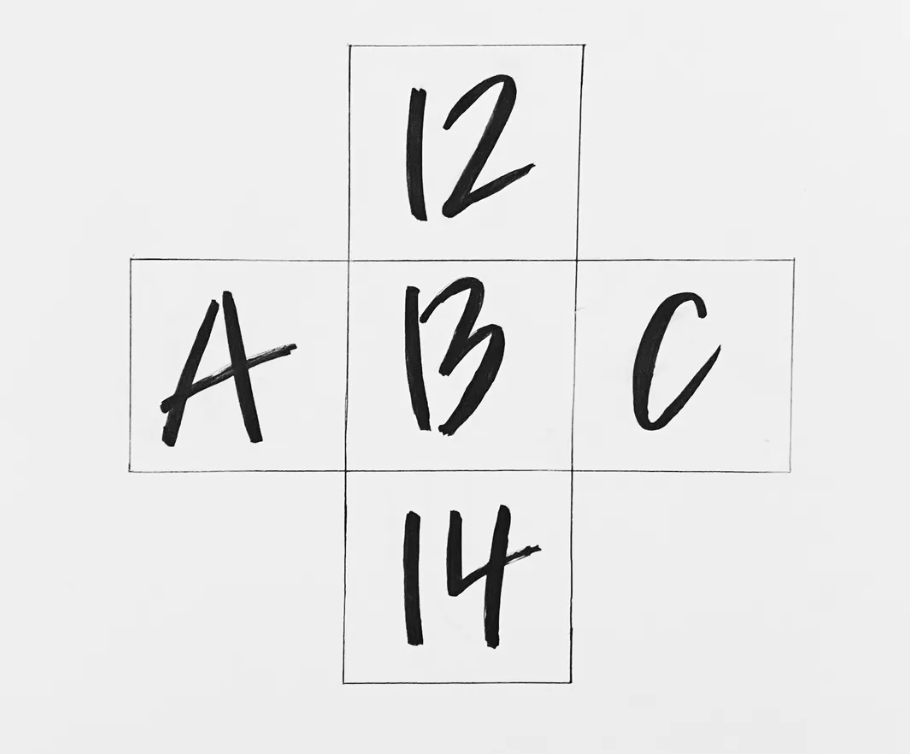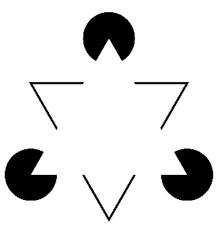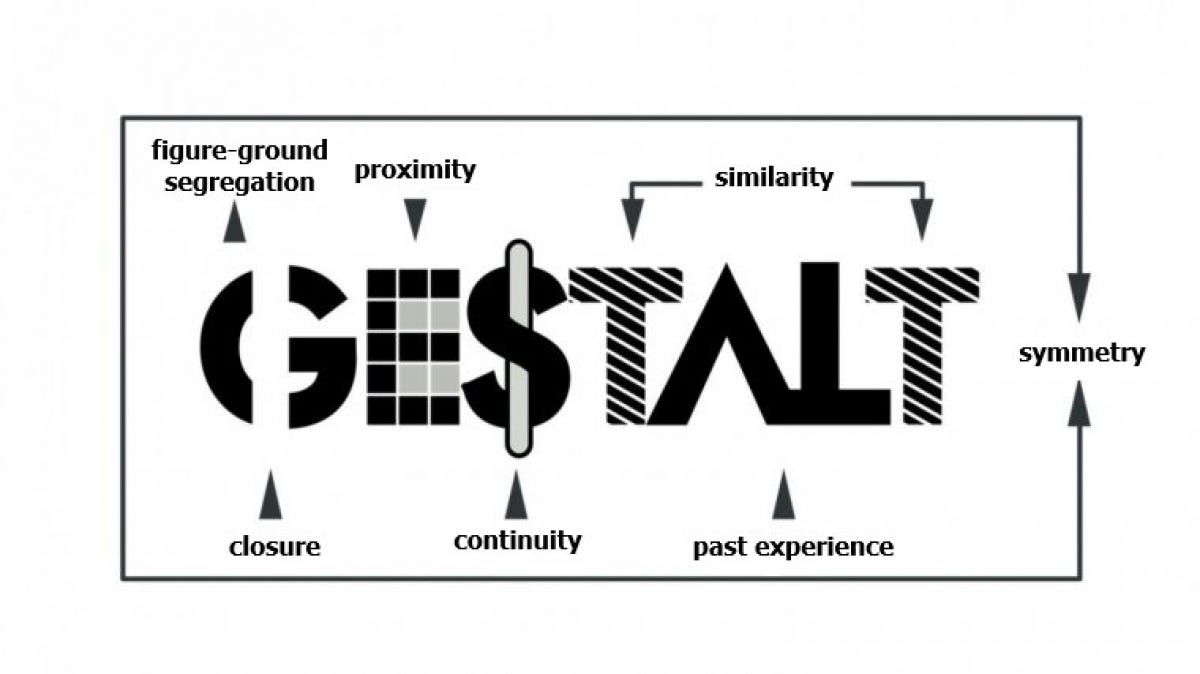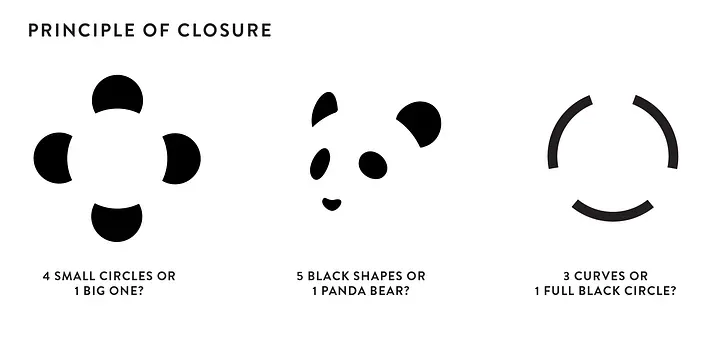ap psychology: sensation & perception unit
1/96
Earn XP
Description and Tags
Name | Mastery | Learn | Test | Matching | Spaced |
|---|
No study sessions yet.
97 Terms
what do sensory organs do?
detect stimuli
sensory organs
eyesight
gustation (sense of taste)
olfaction (sense of smell)
hearing
touch
sensation is…?
mostly biological
perception is…?
cognitive interpretation
mostly learned
inattentional blindness
when something is in your field of vision, but you don’t see it
change blindness
you fail to notice the change that is happening in your field of vision
top-down processing
you see the whole and then examine the details
bottom-up processing
you examine the details to determine the whole
phi penomenon
when you see a series of images that give the illusion of movement
perceptual set
seeing something relative to it’s context

subjective contour
perceiving boarders as lines even though none are present

Gestalt
the whole is greater than some of it’s parts

closure

figure-ground
wants to see something in foreground and background

continunity
our brain wants to continue it
proximity
simplicity
we tend to see it in a more simple way
similarity
synesthesia
the senses are mixed up; out of alignment
ex: hearing different sounds makes you see different colors
monocular depth cue
being able to judge distance with only one eye
binocular depth cue
both eyes judge the distance
retinal disparity
difference that each retina sees
→ when it’s close, there’s a lot of retinal disparity
→ when it’s far, there’s not much of retinal disparity
→ the closer an object is to us, the greater the retinal disparity is that object
IT IS A BINOCULAR DEPTH CUE
mostly biological, partly learned
convergence
eyes move inward as object gets closer = signal is sent to brain
BINOCULAR DEPTH CUE
mostly biological, partly learned
accommodation
as an object draws closer, the shape of our eyeball (or lens) may actually change
MONOCULAR DEPTH CUE
mostly biological, partly learned
lens - projects light back into retina
pictorial depth cue
MONOCULAR DEPTH CUE
completely learned
distal stimulus
proximal stimulus
distal stimulus
the way something takes up space in the physical world
pictorial stimulus
the way something stimulates the retina (what your eye actually sees)
interposition
type of pictorial depth cue
an object getting in the way of another which in turn makes that object look closer than the other
relative size
same sized object = closer objects appear bigger
distal stimulus is same
proximal stimulus changes
texture gradient
clear detail when it’s closer
fuzzy detail when it’s far
motion parallax
distant objects = tend to move slower
closer objects = tend to move faster
aerial perspective
closer objects = towards ground and clear to see
distant objects = towards sky and hazy
linear perspective
closer to vanishing point = more distant
what do mixing red, green, and blue lights make?
white
what colors are part of the trichromatic theory of vision?
red, blue, and green
perceptual constancy
even though it might change the way it hits your eyes, the brain knows the object is still the same
→ color constancy
→ shape constancy
→ size constancy
subliminal messaging
a message will be embedded into another message that will affect someone in a way
it works but however the effect is very small, doesn’t change anyone’s behavior, and is temporary
FCC banned it'
paredidolia
to see order in randomness/disorder
back-masking
playing back a song or anything, thinking that there’s an embedded message in it
absolute threshold
also called fechnar’s law
when do we first start to notice things like smell, sound, etc?
at 50% threshold
Gustav Feshnar
just-noticeable difference (JND)
aka difference threshold
when you just notice the difference
weber’s law
when the initial stimulus intensity is directly proportional to the JND size
ex: initial stimulus (3g) → JND (1g)
initial stimulus (30g) → JND (10g)
when you add a bit to a bit, you can notice
when you add a lot to a lot, you can notice
Ernst Weber
sensory adaptation
as the time time exposed to the stimulus increases, the stimulus intensity decreases
examples: blowing gum, walking into a flower shop, clothes touching your body, etc.
when it comes to continuous stimulus, the intensity is not as much
wavelength has..
→ color (hue)
which color has the longest wavelength?
red
which color has the shortest wavelength?
violet
saturation (purity)
→ mixture of colors - ex: “yellowish red”
→ pure single color - ex: “red”
amplitude determines the..
brightness
what does a high amplitude mean?
it is bright
what does a low amplitude mean?
it is dim
cornea
protective layer outside of the eye
pupil
how clear
→ when it’s bright, it gets smaller
→ when it’s dark, it gets larger
iris
muscle that controls the size of the pupil
colored ring around the eye
responsible for dilating
ex: “principal iris is in charge of her pupils"
lens
projects light to back of eye
retina
if you’re colorblind, it is responsible for the distortion of colors you see
rods
for movement
black & white
no light
cones
colors
fine detail
in light
fovea
loaded with cones
whatever you’re looking at directly, the fovea is looking directly at that
foveal vision
center vision
optic disc
where the blindspot is!!
no photoreceptors here so it creates a natural blindspot for the eye
transduction
turning physical energy, like light, into brain signals
peripheral vision
outside of the center vision
the brain fills in the information for the blind spot & peripheral vision
what projects the image upside down?
the lens
what flips the image right side up?
the brain
what is the direction of the message/light?
rod/cone → bipolar cell → ganglion cell → towards optic disc
optic chiasm
the meeting point of the optic nerves before it makes its way to the thalamus
the more photoreceptors, bipolar, and ganglion cells you have the…
less detail you’re going to see
the less photoreceptors, bipolar, and ganglion cells you have the…
more detail you’re going to see
lateral inhibition
when one is being stimulated and the others are being hindered/stopped
what is another term for nearsightedness?
myopia
nearsightedness (mypoia)
eye is FLATTER than normal
moving closer to compensate → over-projected: far objects blurry
what is another term for farsightedness?
hyperopia
farsightedness (hyperopia)
eyeball is TALLER than normal
under-projected: close objects blurry → move away to compensate
elements of sound
→ frequency (pitch)
→ purity (timbre)
→ amplitude (volume)
pinna
captures sound
→ the outer ear that people can see
ear canal
sound goes through
ear drum (tympanic membrane)
end if the canal
ossicles (includes hammer, anvil, stirrup)
gets sound and violations
→ smallest bone
cochlea
where sound transduction occurs
auditory nerve
sound from the cochlea sent here then after sent to the brain
eustachian tube
below cochlea, it’s connected to the nose and throat
semicircular canals
filled with fluids, where out sense of balance is housed, the fluid shifts as we move
cochlea opened up..
once cochlea is hit by sound, it “waves”. the cilia (the tiny hairs) move within the basilar membrane
place theory
different areas of the cochlea, respond differently to different types of pitch (high, medium, low)
frequency theory
the pitch of the sound depends on the speed of the cilia
the higher the pitch, the faster it moves
the lower the pitch, the slower it moves
traveling wave theory (volley theory)
as a signal moves through, different hairs respond. And the brain puts there different stimulations together to create the sound.
auditory localization
localizing sound based on timing of the sound hitting the ears
ex: sound coming from left side, left ear catches it before the right ear catches it
gustation (taste)
in order to be tastable, it has to water soluble!
types of taste:
→ salty (can help us stay hydrated)
→ sweet (tells you there is calories/energy)
→ sour (tells us its gone bad)
→ bitter (tells us its poisonous)
→ umami - meat (tells you it’s protein)
spice is when our pain receptors kick in
olfaction (smell)
sense of smell does NOT go through thalamus, it goes directly to the brain straight ti olfactory bulb
has to be water soluble
NOT cross-lateralized, not catogorized, not gone trough thalamus,
smell is not as simple as other sense.
feature detectors
bottom-up processing requires
Hubel and Wiesel
tactile sense (touch)
pressure
pain
A fibers: fast pain
C fibers: slow pain
kinesthetic system (body position & movement)
receptors in our joints and muscles that enable us to know the position of our body.
vestibular system (balance)
helps with your sense of balance
→ cerebellum (in the brain)
→ semicircular canals (fluids in the ear)
gate control theory of pain
non-pain signals can help block out the actual pain signal
conduction hearing loss
→ refers to damages done to the ossicles
→ continuous damage causes damage
sensorineural hearing loss
→ degenerative, as you get older
→ in cochlea